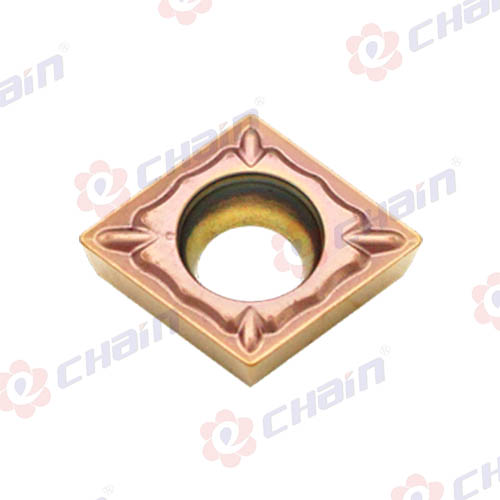Unveiling the Precision: The Role of CNC Inserts in Machining
2023-10-18
Introduction
In the world of precision machining, CNC inserts are unsung heroes, quietly contributing to the efficiency and accuracy of manufacturing processes. These small, replaceable cutting tools play a pivotal role in CNC (Computer Numerical Control) machining, impacting everything from the quality of the final product to the overall cost-effectiveness of production. In this blog, we will explore the world of CNC inserts, shedding light on their significance, types, applications, and the innovative technologies that make them indispensable in modern manufacturing.
The Significance of CNC Inserts
CNC inserts are specially designed cutting tools that are used in various machining operations, including turning, milling, drilling, and threading. These inserts are typically made from hard materials, such as carbide, ceramics, or high-speed steel, and are engineered to withstand the extreme forces and temperatures generated during machining. Here are some key reasons why CNC inserts are essential:
1. Precision and Accuracy: CNC inserts are manufactured with tight tolerances, ensuring consistent and precise cuts, which is crucial for achieving high-quality finished products.
2. Cost-Efficiency: Unlike traditional solid cutting tools, inserts are replaceable. When a cutting edge becomes dull or damaged, the insert can be easily swapped out, reducing downtime and tooling costs.
3. Versatility: CNC inserts are available in various shapes, sizes, and cutting geometries, making them suitable for a wide range of materials and machining applications.
4. Performance: Modern CNC inserts are designed to deliver superior cutting performance, increasing productivity and extending tool life.
Types of CNC Inserts
CNC inserts come in different shapes and styles, each tailored for specific machining tasks. Here are some common types:
1. Turning Inserts: These inserts are designed for use in lathes and turning operations. They come in various geometries, such as square, round, and triangular, to accommodate different cutting requirements.
2. Milling Inserts: Milling inserts are used in milling machines and are available in various configurations, including square, round, and octagonal shapes, as well as with various edge geometries for different milling operations.
3. Drilling Inserts: These inserts are optimized for drilling holes and come in styles such as indexable spade drills, indexable twist drills, and indexable insert drills.
4. Threading Inserts: Thread turning inserts are used for cutting external and internal threads. They feature precise geometries for accurate threading.
5. Grooving and Parting Inserts: Designed for grooving and parting-off operations, these inserts have specific cutting edge profiles to create precise grooves and separations.
Applications of CNC Inserts
CNC inserts find applications across various industries and materials, including:
1. Metalworking: CNC inserts are commonly used for machining metals like steel, aluminum, and titanium, making them integral to industries such as automotive, aerospace, and manufacturing.
2. Woodworking: In the woodworking industry, CNC inserts are used to cut and shape wood and composite materials, improving efficiency and precision.
3. Plastics and Composites: CNC inserts are crucial for machining plastics and composite materials, where precision is paramount.
4. Medical and Dental: The medical and dental industries rely on CNC inserts for the precise machining of medical devices, implants, and dental prosthetics.
5. Energy Sector: In the energy sector, CNC inserts are used for machining components in oil and gas exploration, power generation, and renewable energy technologies.
Innovations in CNC Insert Technology
The world of CNC inserts is not stagnant; it's continuously evolving with technological advancements. Some notable innovations include:
1. Advanced Coatings: Modern CNC inserts often feature specialized coatings that enhance wear resistance, reduce friction, and improve chip evacuation.
2. Precision Geometry: Inserts now come with highly engineered cutting edge geometries for specific applications, optimizing performance and reducing cutting forces.
3. Chip Control: Inserts are designed to improve chip control, reducing chip breakage and facilitating efficient chip removal.
Conclusion
CNC inserts may be small, but their impact on precision machining is monumental. From enhancing accuracy to increasing cost-efficiency and versatility, these cutting tools are the cornerstone of modern manufacturing. As technologycontinues to advance and demands for precision grow, CNC inserts will remain at the forefront of innovation, enabling manufacturers to produce high-quality, intricate, and reliable products across a wide range of industries. So, the next time you admire a meticulously machined component, remember the silent contribution of CNC inserts in making it a reality.



